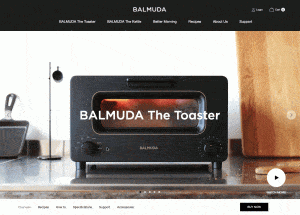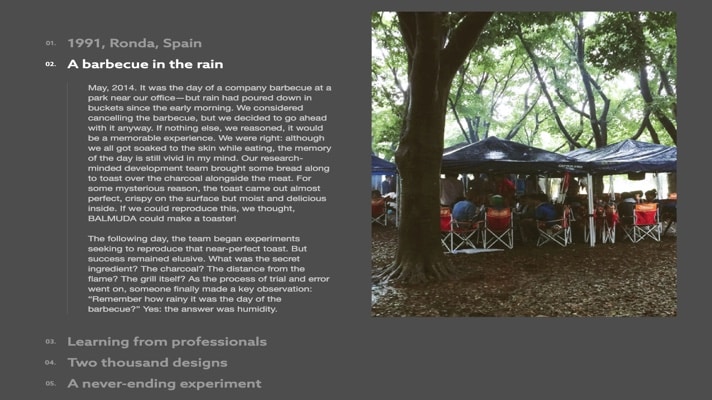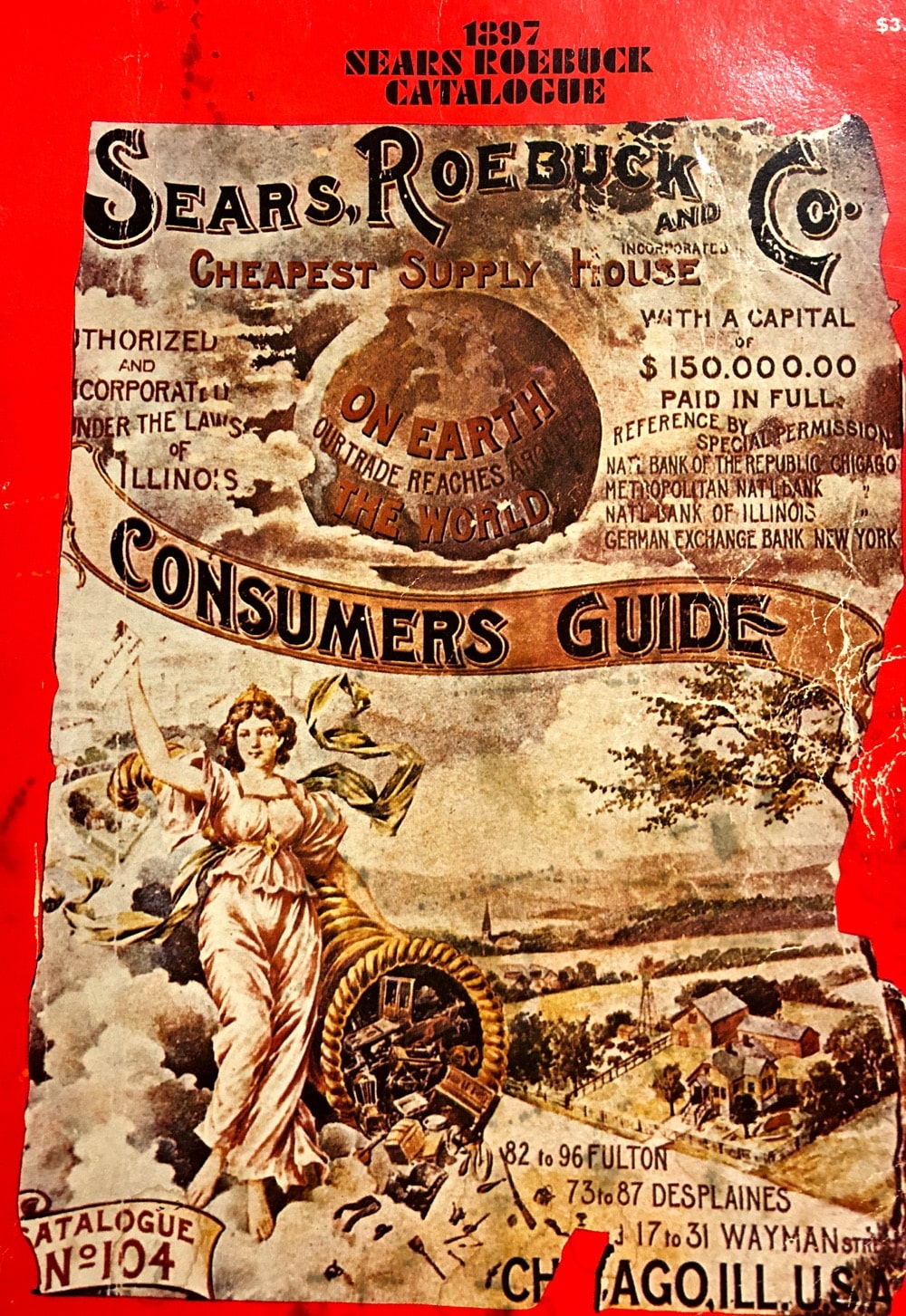Every day we make choices. Some of them are so automatic we don’t even realize we are making them. It’s true in life. It’s true in business.
Every choice you make for your eCommerce site has an impact, the key is to choose in a way that has the most positive impact.
In over twelve years of studying and experimenting, I have time and again come to the conclusion that optimizing your product page is the number one way to boost your conversion rates.
The product page is where we ask shoppers to part with their hard-earned money in exchange for what we offer. It’s where they make their decision to buy, or not to buy.
It’s the moment of truth.
Shoppers enter your site looking to buy one item. As far as they’re concerned, your entire site is one product page.
Here’s what 12+ years, 80+ websites, and over 340 product pages have taught us about how you can best take advantage of that fact.
When does a shopper turn into a buyer?
As far as your shopper is concerned, your entire site is pretty much one, single product page.
They’re looking for one thing, and one thing only. The product page is where your shopper makes their buy/no buy decision.
Sure, they might end up buying more than one item (if they do, congrats on the great work you’re doing), but when they started shopping, they had a single goal in mind.
It shows. When a shopper lands on the product page of the item they are interested in, it’s as if time stands still. They freeze, trying to contemplate their next navigation.
We see it over and over when we analyze buyer behavior on eCommerce websites. A shopper finds your site and then, as soon as they land, they start scrolling frantically.
Shoppers think they’re in the right place, but they’re not sure. They want to be sure. They are looking for clues that tell them “you’re in the right place.”
They’ll often navigate to your homepage if they weren’t already there and stop briefly as they enter your shop. But when they find the product page they were looking for, your shopper comes to a dead stop.
This is not a one-time thing. In my years of studying buyer psychology and buyer behavior, I have learned that this is when your shopper is giving you as much attention as you’re ever going to get.
You have to capitalize on that attention right away.
What’s your story?: why telling your product story is the most effective way to grow your conversion rates
In all of our research, all of our testings, and in all of the results, we have seen, by far the best way you can take advantage of your shopper’s attention is by telling them a story.
If you’re thinking: “I run an eCommerce site, not a library. I sell products. Why should I care about storytelling?” I get it. For the longest time, I thought the same way. I like to think of myself as a logical, analytical guy. So I started where I always do: I looked at the data.
As it turns out, there are well-researched, biological reasons why storytelling is so effective:
- Stories are 22 times more memorable than facts & figures alone.
- Stories activate visual cortex. It’s impossible to hear the story about the fox and the sour grapes and not see a fox trying and failing to reach the grapes. The story is instantly converted into a visual narrative, and visual narratives embed more deeply in our brains.
- Our brain waves start synchronizing with the storyteller as we’re digesting a story, says Uri Hasson, professor of psychology and neuroscience at Princeton University. We experience what the storyteller is experiencing.

Stories are powerful. Stories are how humans make sense of the world. At Frictionless Commerce, we love telling our clients’ stories. Here’s how you can capitalize on their power.
Stories are how we humans make sense of the world
Humans are constantly taking in information. At rates, you would not believe. A recent study found that the average human consumes around 34 gigabytes of media alone. Nevermind the information we take in and process while walking outside, eating a meal, or talking to a friend.
It’s truly mind-boggling.
We need to be able to make sense of that information. We need to store the important parts, discard the rest, and sort it a way that we can retrieve the important information when we need it. Information like: upon seeing a lion across the sahara, turn the other way and run. Or that we should also turn and run upon seeing a 3-Card Monte hustler on a street corner.
Stories help humans do that. They also help shoppers make sense of the information they are taking in on your website. So if you can tell the right story in the right way it will be irresistible to your shoppers.
But… what’s the right story? And how do you tell it in the right way?
Let’s start here.
Tell the right story: the two essentials for creating irresistible product stories
So your shopper has landed on the product page they were looking for. Remember that, for them, that product page might as well be your entire website. It’s the only thing they’re focused on. They’ve stopped scrolling.
You finally have their undivided attention, and they have questions. It is up to you and your product page to answer those questions, otherwise, that shopper might never turn into a buyer.
Think of your site as a hurdle race where the shopper has to overcome hurdles before they are ready to use their credit card.

The first and biggest hurdle to clear is: “who are you and why should I care?” We call this the unfamiliarity barrier.
The single, most effective way to clear that hurdle is by telling your shopper your “why we exist story.”
The “why we exist” story
For your shopper to turn into a buyer they need to trust you. They need to believe what you say. They need to be convinced that, if they give you their money, your product will do what you say it will do.
So, you must build that trust. You must forge a bond — establish a connection. In a world filled with people clamoring for your shopper’s attention, you need to break through the noise. You need to be able to reach out of their screen, grab them (metaphorically), and demand their attention.
Your “why we exist” story really matters. A KoMarketing survey asked the question, “Once you’re on the homepage, what information do you want to see available?” 52% of people surveyed wanted to see About / Company Information. (Source)
You start by telling your “why we exist” story. That story answers their question: “who are you and why should I care?”
I’m going to show you how you can figure out how to tell that story, but first we need to talk about the second essential element in creating an irresistible product story.
The “why this product must exist” story
Now that your buyer has read your “why we exist” story, you are on the road to trust. You’ve established a tentative connection — a bond. You might even say that they like you.
Of course, liking someone and handing over your hard-earned money are two completely different things. Your buyer has another important question. One that you must answer for them if they are ever going to complete that transaction:
“What makes your product the best possible solution to my problem?” More simply, “why should I buy your product?”
This is where you tell them your “why this product must exist” story. You need to show your shopper that once you understand the pain, your problem is removed, the problem is solved, and the need is filled; there was no choice. You simply had to create this product to fix things.
These 2 questions are the key to your product page optimization. Get them right, and you too could experience a 20% increase in conversion rates.
How to extract your “why we exist” and “why this product must exist” stories
I’ll let you in on a secret: every single one of my clients has a truly compelling story. Often they are unaware of it. Too shy. Too modest.
But your product page and your product story are not times for modesty. Now is the time to tease out all that hard work you have done that led you to this point. It’s time to find your story.
I have found one of the best ways to overcome these perfectly natural tendencies is a role-playing exercise.

Imagine that, at the end of a great week, you are taking a well-deserved night off. You are sitting at a bar and strike up a conversation with the person next to you. You hit it off and the conversation turns to business, so you tell them what it is that you do.
Turns out they’ve been looking for a product like yours. They have questions:
- When did you first see the need for your product?
- Why did it affect you? What personal frustration did it connect with?
- Were you surprised the product didn’t already exist?
- How did you go from having the idea to mustering the courage to start a company? Was that scary?
- Running a business is hard as hell. How did you overcome setbacks along the way? What gets you out of bed every day?
- What are your guiding principles?
- How do stay ahead of competitors with deeper pockets?
- Before you started what options were available to the shopper?
- What was the most complicated part of the development process? Were there parts that turned out to be way more complicated than you had originally anticipated?
- How important is it that this product exists? What would the world miss out on if it didn’t exist?
- How do you stay ahead of the competition?
- Your invention has been available for a number of years. What improvements have you made along the way? Please share some of those product improvement stories.
- When you talk to customers who have bought and used your product, what feature do they seem most surprised by?
- What’s one aspect of your product story that most buyers don’t know?
- Other sites can outspend you online. They will always show up #1 in a Google search. How do you plan to deal with that?
Every single answer you give them is a potential angle for your product story.
Each of these product story angles is a compelling element of your story. These product story angles help you answer your buyers’ questions. They want to know who you are, why they should care, and what you can do for them.
Tell your story in the right way: how to use product story shaping to create compelling product stories
You need to tell your story in a way that makes sure your ideal buyer couldn’t turn away if they wanted to. Make sure it’s irresistible — compelling. The right story is catnip to your ideal buyer.
Think about it.
We all know at least one person who can turn their weekend of folding laundry and bingeing Netflix into Shakespeare. We also know the other guy who could make us fall asleep while telling us how he single handedly rescued thirteen orphans from a burning building.

Be the Shakespearean laundry folders. Let the other guys play snoozy orphan rescuers.
Every day we humans are influenced by millions of unconscious prompts. Those prompts help shoppers navigate their choices. You need to make sure you find the right prompts to do that.
Over the last twelve years and hundreds of experiments, we have found the most important, often underused, conversion copywriting tactics that make the greatest difference in boosting your conversion rates. Here’s our list:
The 9 fundamentals of product story shaping:
- People are skeptical of “too good to be true”
- They find expertise sexy
- They root for people who beat the odds
- They are fascinated by surprising details
- They are visual animals
- They need the motivation to break habits
- They love personalized experiences
- They like knowing they’ve stumbled onto something rare
- We must resolve their negative thoughts
When you use these elements to shape your product story, not only will you be telling the right story, you will be telling it in the right way.
And that is when you will start seeing a meaningful increase in your conversion rates.
Some examples of product pages that really nail the product story
BALMUDA The Toaster
BALMUDA exudes badass confidence. You see it as soon as you hit the page. This isn’t some generic model number or description for the product, it’s simply “The Toaster.” Here’s the product page.

There are so many things to love about this product page, but let’s focus on the product story of BALMUDA The Toaster.
There are two essential elements for creating irresistible product stories: “why we exist” and “why this product must exist.” BALMUDA nails both.
Gen Terao, BALMUDA CEO, tells his own personal story about how BALMUDA came to exist. He tells his story in the first person. He talks about his world travels as a teen and the impression that freshly baked Spanish bread made on him.
This is where the seed for The Toaster is planted.
He fast forwards to 2014 and tells another personal story, “a barbecue in the rain.” BALMUDA entered the small kitchen appliance market with The Toaster in 2015, so it’s a great decision to start the company story here. It is the AHA moment for the toaster. It is a great use of the fourth fundamental of product story shaping “people are fascinated by surprising details.”

This story provides a glimpse into the “why this product must exist” story: to recreate the most perfect toast Gen ever experienced.
BALMUDA understands the power of the story. They use a number of the fundamentals of product story shaping to build trust, create bonds, and instill confidence in their buyers that The Toaster will be the perfect solution to their toasting problems.
The Original Baking Steel
I would also like to humbly submit a client of my own: Baking Steel. Our marching orders were to increase sales of their top seller: the Original Baking Steel.

We love inventors. In fact, most of our conversion optimization work is done with inventors. When we were introduced to Andris Lagsdin we hit it off right away. Here was a man who had been baking pizzas for 24 years. After experimenting with dozens of ideas, Andris discovered the perfect pie’s secret: the Original Baking Steel.
When we started this project, I had a cursory understanding of how the product worked. As I talked more with Andris, I learned many remarkable details, from the weight to the dimensions and materials used for construction. I also learned more about heat transfer properties than I could have ever imagined.
You see, to Andris, these details were just the nuts and bolts of his product. It never occurred to him to tell his customers about them. Baking Steel had an amazing story. All we did was shed some light on it.
Here are some of the story angles we explored
- The scientific equation to explain the heat transfer property of steel (we didn’t expect people to read the whole equation, but just seeing it there would build credibility).
- A baking analogy that was instantly relatable, showing why the Original Baking Steelworks so will.
A quick tip: use analogies to help people understand new concepts by connecting them with familiar ideas they already understand. - Accentuating the attributes of the product. We went into great detail to explain exactly WHY it is 14″ by 16″, and the thickness is ¼” and weight is 16 pounds (second fundamental of product story shaping: “people find expertise sexy”).
- We added a TON of pictures. Buyers are interested in what Original Baking Steel can do for their taste buds, and we helped them see it (fundamental five, “people are visual animals”).
We ran the test twice. Our new product page demolished control. Our client saw a 46.42% increase in sales.
Steps to take to create product pages that boost your conversion rate
Your goal on your eCommerce site is to convert shoppers into buyers. The way you are going to do that is to help them make that decision when they are ready. Follow these steps to make that happen.
- Start with the product page of your bestseller. Shoppers reach the buy/no-buy decision point on your product page. Your bestsellers product page is your greatest opportunity to convert shoppers into buyers.
- Find your product story. Your product story is the number one element that will boost your conversion rates.
- Identify product story angles. There are product story angles all around you. Every client I have ever worked with has had their own unique, compelling story that is irresistible to their ideal customers.
- Create your “why we exist” and “why this product must exist” stories. Use the product story angles you have identified and craft your stories using them.
- Shape your product story using the “9 fundamentals of product story shaping.” Use the right conversion copywriting tactics so you are telling your story in the right way — the way that boosts conversions.
- Test. test. Test. See what the data says. Work on your product story. Hone it. Refine your message until you are confident, beyond a shadow of a doubt, that the product story you are telling is the most compelling one you can. Honestly, it’s rare that anyone gets it right on the first try.
The single, most effective way to turn shoppers into buyers is by telling them your product story. We have seen this over and over again with our clients.
Do yourself a favor and put time and energy into your product story. Do that, and you, too, may find yourself with a 20% boost in conversions on your best-selling product.
Quotable ideas
“In all of our research, all of our testings, and in all of the results we have seen, by far the best way you can take advantage of your shopper’s attention is by telling them a story.”
“As far as your shopper is concerned, your entire site is pretty much one single product page.
They’re looking for one thing and one thing only. The product page is where your shopper makes their buy/no-buy decision.”
“You need to tell your story in a way that makes sure your ideal buyer couldn’t turn away if they wanted to. Make sure it’s irresistible — compelling. The right story is catnip to your ideal buyer.”
About Rishi
Rishi specializes in radically improving product page conversion rates by supercharging your product story.
The most valuable thing he owns is this reprint of an 1897 Sears catalog.

Rishi’s Frictionless Commerce company uses buyer psychology copywriting to optimize conversion rates.
He’s also quite active on LinkedIn, constantly posting quick examples you can easily implement on your site.



